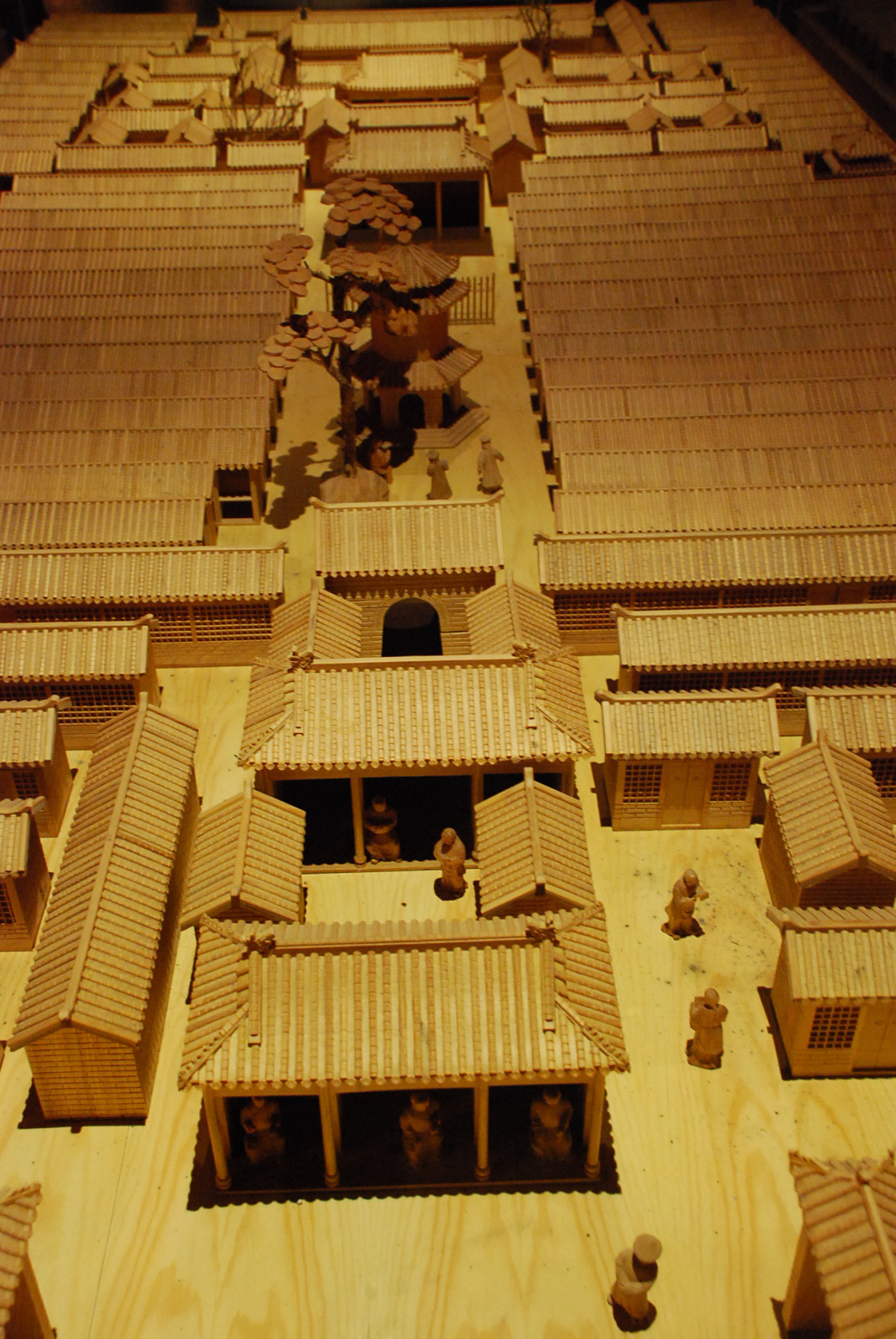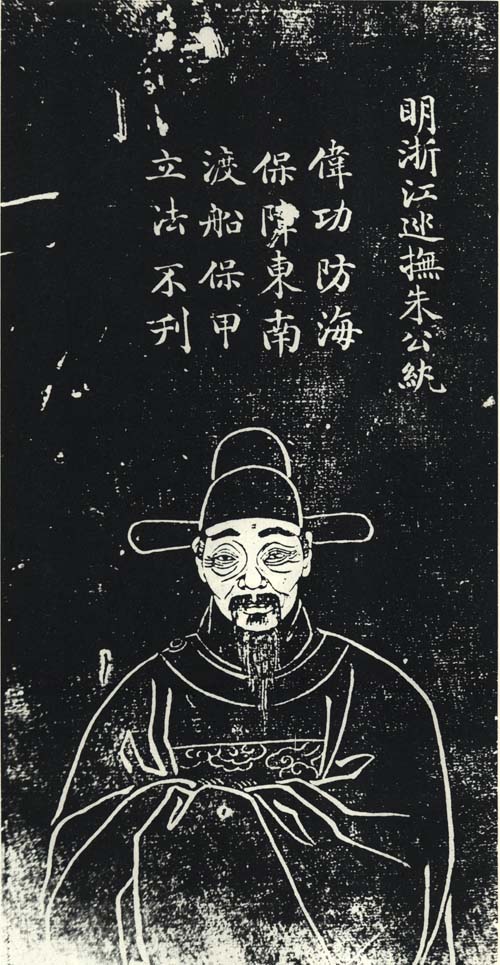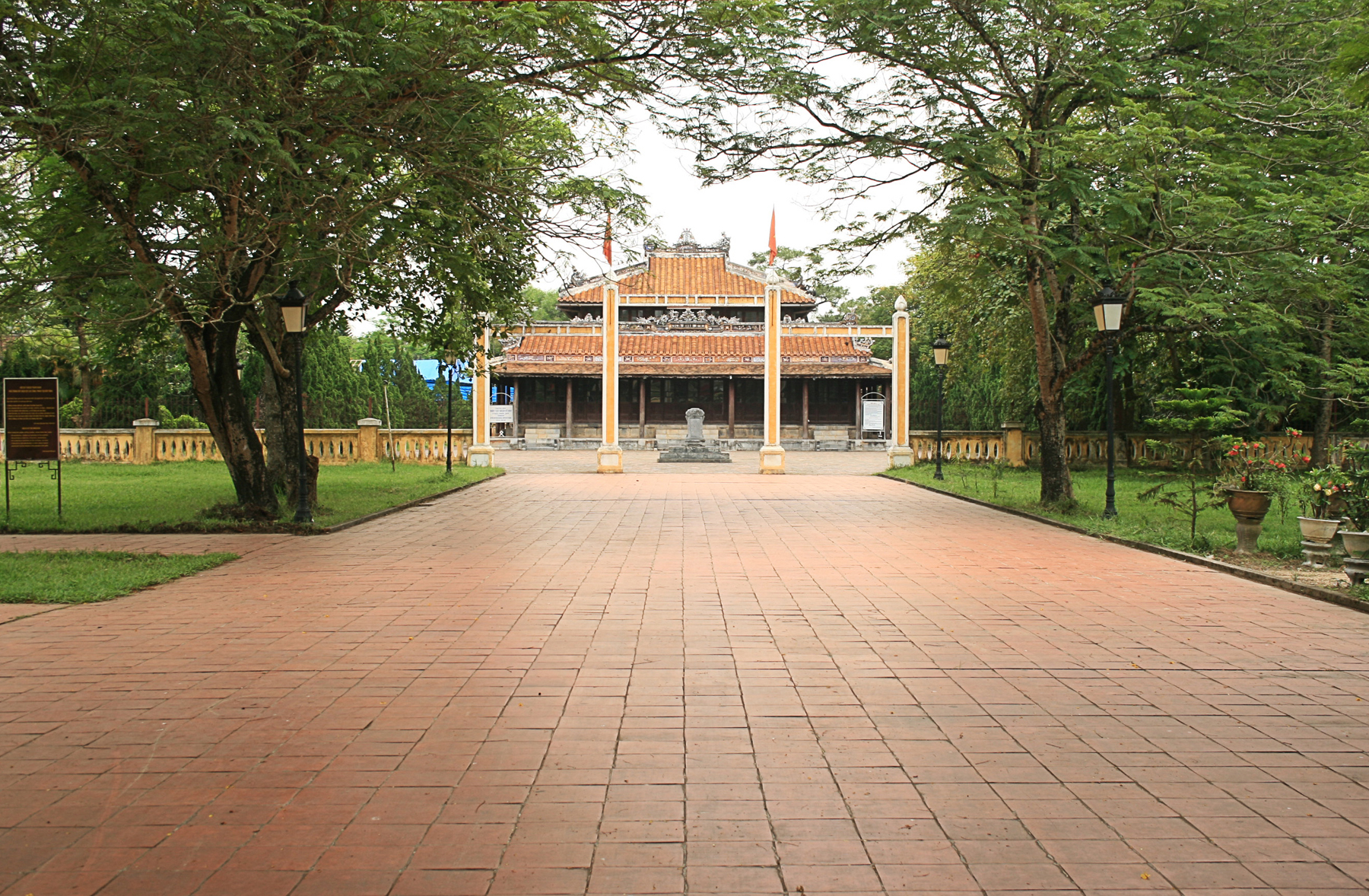|
Zhao Wenhua
Zhao Wenhua (; died 1557) was a Chinese public official during the reign of the Ming dynasty's Jiajing Emperor. After initial setbacks in his career, Zhao became a close confidant to Grand Secretary Yan Song, eventually becoming a vice minister. At the time, the Chinese coast was plagued by a series of Jiajing wokou raids, raids by Chinese smugglers. Zhao disagreed with how the military was handling the situation and made his own recommendations, which the military ignored. After the Emperor lost confidence in Minister of War Nie Bao, he tasked Zhao with solving the crisis himself. Zhao quickly came into conflict with other officials that were already at the coast, and went on to orchestrate the removal of several of them, as well as a prominent court official. Zhao rose to the rank of Minister of Works and positioned his protege Hu Zongxian as zongdu, supreme commander, a role that Hu excelled in. Zhao, however, had earned the disdain of other figures in the court, and his disre ... [...More Info...] [...Related Items...] OR: [Wikipedia] [Google] [Baidu] |
Cixi City
Cixi (), alternately romanized as Tzeki, is a county-level city under the jurisdiction of the sub-provincial city of Ningbo, in northeastern Zhejiang province, China. As of the 2020 census, its population was 1,829,488. Its urban agglomeration built-up (or metro) area, largely contiguous with Cixi plus the county-level city of Yuyao, had 3,083,520 inhabitants. History Cixi was part of the state of Yue in the Spring and Autumn period (770–476 B.C.). The county was set up in the Qin dynasty. At first it was called "Gouzhang" and has been using the name of "Cixi" since the Kaiyuan reign of the Tang dynasty (738 A.D.). Geography Cixi City is located on the south of the economic circle of Yangtze River Delta, and is from Ningbo in the east, from Shanghai in the north and from Hangzhou in the west. Administrative divisions Subdistricts *Baisha Road Subdistrict (白沙路街道), Gutang Subdistrict (古塘街道), Hushan Subdistrict (浒山街道), Kandun Subdistrict (坎� ... [...More Info...] [...Related Items...] OR: [Wikipedia] [Google] [Baidu] |
Imperial Examination
The imperial examination was a civil service examination system in History of China#Imperial China, Imperial China administered for the purpose of selecting candidates for the Civil service#China, state bureaucracy. The concept of choosing bureaucrats by merit rather than by birth started Imperial examination in Chinese mythology, early in Chinese history, but using written examinations as a tool of selection started in earnest during the Sui dynasty (581–618), then into the Tang dynasty (618–907). The system became dominant during the Song dynasty (960–1279) and lasted for almost a millennium until its abolition during the late Qing reforms, late Qing dynasty reforms in 1905. The key sponsors for abolition were Yuan Shikai, Yin Chang and Zhang Zhidong. Aspects of the imperial examination still exist for entry into the civil service of both China and Taiwan. The exams served to ensure a common knowledge of writing, Chinese classics, and literary style among state officials. ... [...More Info...] [...Related Items...] OR: [Wikipedia] [Google] [Baidu] |
Memorial To The Throne
A memorial to the throne () was an Official communications of the Chinese Empire, official communication to the emperor of China. They were generally careful essays in Classical Chinese and their presentation was a formal affair directed by government officials. Submission of a memorial was a right theoretically available to everyone from the Taizi, crown prince to a common farmer, but the court secretaries would read them aloud to the emperor and exercised considerable control over what was considered worthy of his time. They were used in imperial China as a means of regulating corrupt local officials who might otherwise have escaped oversight.Brook33 Han dynasty Under the Han dynasty, generally, the reception of memorials was the responsibility of the Government of the Han dynasty#Imperial Counselor, Imperial Secretary tasked with overseeing provincial administration. He was generally required to present any formal memorials, but could reject them for improper formatting.Wang (19 ... [...More Info...] [...Related Items...] OR: [Wikipedia] [Google] [Baidu] |
Zhang Jing (Ming Dynasty)
Zhang Jing (張經; died 12 November 1555), going by the name Cai Jing () for much of his life, was a Chinese official who served the Ming dynasty. As he climbed the ladder of Chinese bureaucracy, he became in charge of several provinces as supreme commander, and was involved in conflicts such as the suppression of the Yao rebellions in the southwestern frontier and the defence of China from ''wokou'' pirates. At the height of his power, he was in charge of the military in six provinces, an unprecedented number in the Ming dynasty. Despite winning a great victory against the pirates in 1555, he quickly fell from power by running afoul of the domineering clique of Yan Song and Zhao Wenhua, and was executed by the Jiajing Emperor later in the same year. Early career A native of Houguan county (侯官縣; present-day Fuzhou) of Fujian province, Zhang Jing was noted as a man of tall stature. He took the imperial examinations and received the '' jinshi'' degree in 1517 under the n ... [...More Info...] [...Related Items...] OR: [Wikipedia] [Google] [Baidu] |
Lake Tai
Taihu (), also known as Lake Tai or Lake Taihu, is a lake in the Yangtze Delta and the third largest freshwater lake in China. The lake is in Jiangsu province and a significant part of its southern shore forms its border with Zhejiang. With an area of and an average depth of , it is the List of lakes of China, third-largest freshwater lake entirely in China, after Poyang Lake, Poyang and Dongting Lake, Dongting. The lake contains about 90 islands, ranging in size from a few square meters to several square kilometers. Lake Tai is linked to the Grand Canal of China, Grand Canal and is the origin of a number of rivers, including the Suzhou Creek. Formation Scientific studies suggest that Lake Tai's circular structure is the result of a meteor impact, which resulted in shatter cones, Shock metamorphism, shock-metamorphosed quartz, microtektites, and shock-metamorphic unloading fractures. The prospective impact crater has been dated to be greater than 70 million years old and ... [...More Info...] [...Related Items...] OR: [Wikipedia] [Google] [Baidu] |
Cao Bangfu
Cao or CAO may refer to: Mythology *Cao (bull), a legendary bull in Meitei mythology Companies or organizations *Air China Cargo, ICAO airline designator CAO *CA Oradea, Romanian football club *CA Osasuna, Spanish football club * Canadian Association of Optometrists *Canadian Association of Orthodontists *Central Allocation Office, cross border electricity transmission capacity auction office *Central Applications Office, Irish organisation that oversees college applications *Civil Aviation Office of Poland *Iran Civil Aviation Organization *Office of the Chief Administrative Officer of the United States House of Representatives * Compliance Advisor/Ombudsman, accountability arm of the World Bank *Council for Adult Education, later Centre for Adult Education, in Victoria, Australia Job titles *Chief Academic Officer of a University, often titled the Provost *Chief accounting officer of a company * Chief administrative officer of a company *Chief analytics officer of a company ... [...More Info...] [...Related Items...] OR: [Wikipedia] [Google] [Baidu] |
Zhu Wan
Zhu Wan (; September 29, 1494 – January 2, 1550), courtesy name Zichun () and art name Qiuya (), was a Chinese general of the Ming dynasty. He was known for his uncompromising stance against the Jiajing wokou pirates (so named because they raided during the Jiajing era) and the gentry members who secretly supported them. Early life and career Zhu Wan was born in Changzhou (), now a part of Suzhou, to the schoolteacher Zhu Ang () and his concubine surnamed Shi (). Throughout his upbringing, Zhu Wan and his mother were subject to various abuse by his father's principal wife and his half-brothers. The abuses started three days after he was born when they tried to starve him to death and lasted as late as 1546. His mother shielded him from the abuse when she could and once, an uncle and a cousin intervened to save him from death. Zhu Wan did not mention his father's role in the abuses, but wrote that his father was patient and strict when he taught him the classics and history. Th ... [...More Info...] [...Related Items...] OR: [Wikipedia] [Google] [Baidu] |
Grand Coordinator
A ''xunfu'' was an important History of China#Imperial China, imperial Chinese provincial office under both the Ming dynasty, Ming (14th–17th centuries) and Qing dynasty, Qing (17th–20th centuries) dynasties. However, the purview of the office under the two dynasties differed markedly. Under the Ming dynasty, the post originated around 1430 as a kind of inspector-general and ad hoc provincial-level administrator; such a ''xunfu'' is usually translated as a . However, since the mid-17th century, ''xunfu'' became the title of a regular provincial governor overseeing civil administration in the Qing dynasty. Under both dynasties, the ''xunfu'' was subordinate in military affairs to the multi-provincial ''zongdu'' (wikt:總督, 總督), usually translated as "supreme commander" under the Ming and "governor-general" or "Viceroys in China, viceroy" under the Qing. The Nguyễn dynasty of Vietnam also established the position (known as ''tuần phủ'' or ''tuần vũ'' 巡撫) bas ... [...More Info...] [...Related Items...] OR: [Wikipedia] [Google] [Baidu] |
Haijin
The Haijin () or sea ban were a series of related policies in China restricting private maritime trading during much of the Ming dynasty and early Qing dynasty. The sea ban was an anomaly in Chinese history as such restrictions were unknown during other eras; the bans were each introduced for specific circumstances, rather than based on an age-old inward orientation. In the first sea ban introduced in 1371 by the Ming founder Zhu Yuanzhang, Ming China's legal foreign trade was limited to tribute missions, placing international trade under a government monopoly. Initially imposed to deal with Japanese piracy amid anti-Ming insurgency, the Ming was not able to enforce the policy, and trade continued in forms such as smuggling. The sea ban was counterproductive: smuggling and piracy became endemic periodically (though not continuously), mostly perpetrated by Chinese who had been dispossessed by the policy. Piracy dropped to negligible levels upon the end of the policy in 1567. Th ... [...More Info...] [...Related Items...] OR: [Wikipedia] [Google] [Baidu] |
Wokou
''Wokou'' ( zh, c=, p=Wōkòu; ; Hepburn romanization, Hepburn: ; ; literal Chinese translation: "dwarf bandits"), which translates to "Japanese pirates", were pirates who raided the coastlines of China and Korea from the 13th century to the 17th century.Wakō Encyclopaedia Britannica The wokou were made of various ethnicities of East Asian people, East Asian ancestry, which varied over time and raided the mainland from islands in the Sea of Japan and East China Sea. Wokou activity in Korea declined after the Treaty of Gyehae in 1443 but continued in Ming dynasty, Ming China and peaked during the Jiajing wokou raids in the mid-16th century. Chinese reprisals and strong clamp-downs on pirates by Japanese authorities saw the wokou disappear by the 17th century. Hist ...
|
Beijing City Fortifications
The Beijing city fortifications were a series of Defensive wall, walls with towers and gates constructed in the city of Beijing, China in the early 1400s until they were partially demolished in 1965 for the construction of the 2nd Ring Road and Line 2, Beijing Subway, Line 2 of the Beijing Subway. The original walls were preserved in the southeastern part of the city, just south of the Beijing railway station. The entire perimeter of the Inner and Outer city walls stretched for approximately . Beijing was the capital of China for the majority of the Yuan dynasty, Yuan, Ming dynasty, Ming, and Qing dynasty, Qing dynasties, as well as a secondary capital of the Liao dynasty, Liao and Jin dynasty (1115–1234), Jin dynasties. As such, the city required an extensive fortification system around the Forbidden City, the Imperial City, Beijing, Imperial City, the Inner city, and the Outer city. Fortifications included gate towers, gates, archways, watchtowers, barbicans, barbican towers, ... [...More Info...] [...Related Items...] OR: [Wikipedia] [Google] [Baidu] |
Guozijian
The Guozijian,Yuan, 194. sometimes translated as the Imperial College, Imperial Academy, Imperial University, National Academy, or National University, was the highest level academic and educational institution throughout most of imperial China's history. It was created under the reign of Emperor Wu of Jin (r. 265–289) and became the highest level academic institution in China over the next 200 years. After the demise of the Song dynasty (960–1279), it became synonymous with the previous highest level academic institution, the '' Taixue''. The Guozijian was abolished in 1907 during the Qing dynasty. History Origin The Guozijian (''Directorate of Education'') was founded under Emperor Wu of Jin (r. 265–289) to educate the nobility. After the nine rank system was introduced for grading bureaucrats in the Chinese government, the Guozijian was created for persons rank five and above, effectively making it the educational institution for nobles, while the Taixue was releg ... [...More Info...] [...Related Items...] OR: [Wikipedia] [Google] [Baidu] |





